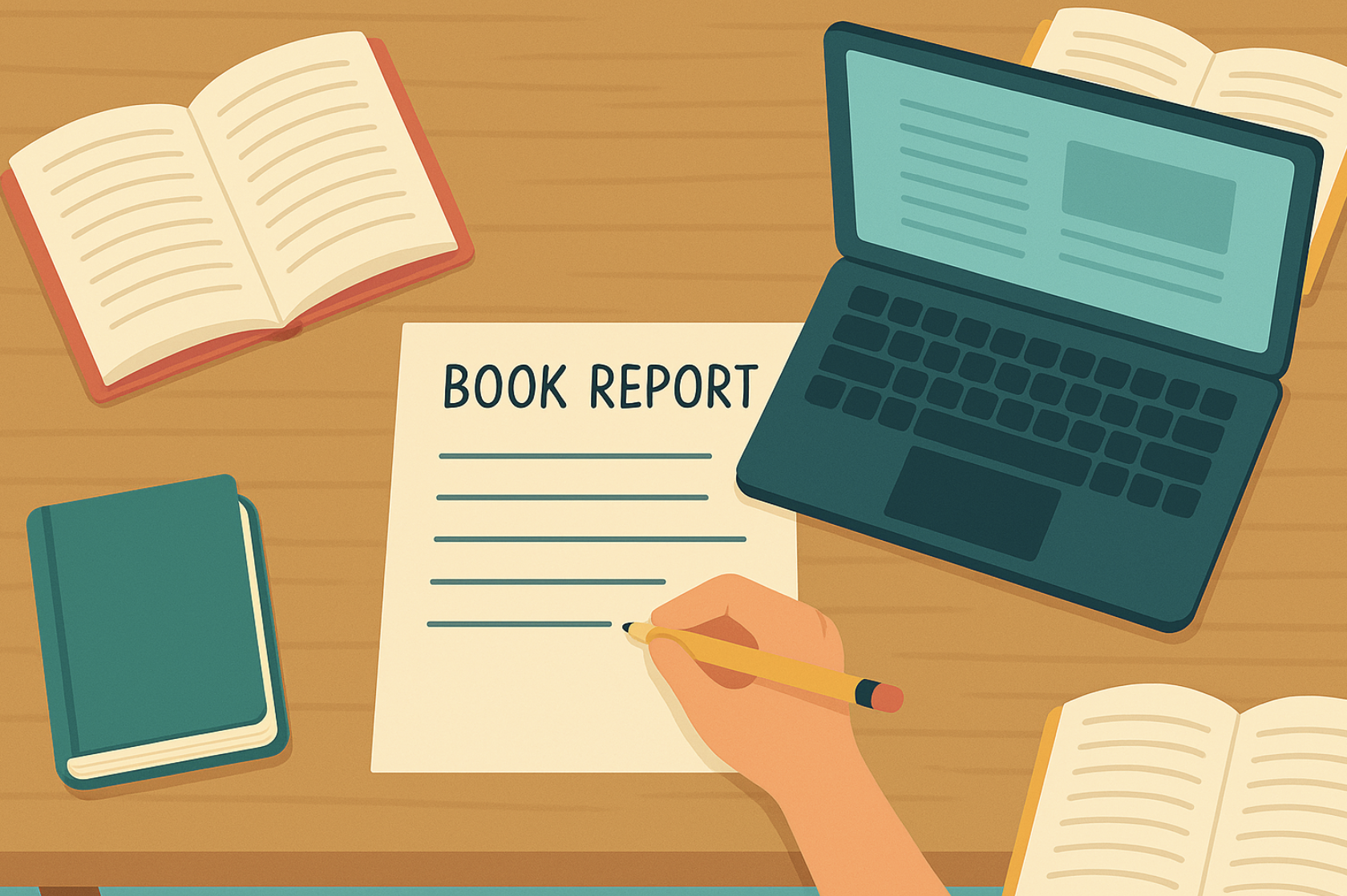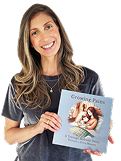An autobiography is a self-written account of the author’s life. Unlike biographies, which are written by someone else, autobiographies offer a personal, first-hand perspective on the author’s experiences. The goal is to share key moments that shaped the author’s identity, providing readers with an intimate glimpse into their journey.
Autobiographies are different from memoirs in that they typically cover the author’s entire life, while memoirs focus on specific events or periods.
Different Types of Autobiographies
Personal Autobiographies: These provide a broad account of the author’s life, covering major events, personal growth, and challenges. The Diary of a Young Girl by Anne Frank is a well-known example.
Cultural Autobiographies: These explore how cultural identity shapes a person’s life. Dreams from My Father by Barack Obama is a prime example.
Literary Autobiographies: Focusing on the author’s relationship with literature and the craft of writing, these autobiographies highlight the author’s creative journey.
Short Autobiographies: These are concise, offering a snapshot of the author’s life in a shorter format, often focusing on key moments or themes.
10 Famous Examples of Autobiography
Autobiographies offer readers a unique glimpse into the lives of remarkable individuals. From world leaders to literary icons, these personal stories have shaped our understanding of history, resilience, and personal growth. In this section, we’ll explore 10 famous autobiographies, diving into why they’re so impactful, what authors can learn from them, and the powerful messages they convey.
The Diary of a Young Girl by Anne Frank
A poignant account of Anne Frank’s life in hiding during the Holocaust, symbolizing hope and resilience. Written as a personal diary, it offers intimate reflections on daily life and emotions. Even in the darkest of times, the human spirit can find hope and strength.
What Authors Can Learn: The power of raw, honest writing—authenticity resonates deeply with readers.
The Story of My Life by Helen Keller
Helen Keller’s inspiring journey from a life of silence and darkness to becoming a renowned author and activist. Written in a reflective and eloquent style, it blends personal experiences with intellectual insights.
What Authors Can Learn: Transforming personal challenges into a powerful message of empowerment and hope.
Long Walk to Freedom by Nelson Mandela
Nelson Mandela’s account of his life and 27 years in prison, symbolizing the struggle for racial equality and justice in South Africa. Written in a clear, straightforward narrative, it is both personal and historically significant.
What Authors Can Learn: The importance of clarity and purpose in storytelling, especially when addressing complex social issues.
I Know Why the Caged Bird Sings by Maya Angelou
A vivid memoir of Maya Angelou’s childhood, touching on themes of race, trauma, and resilience in the American South. Written in a lyrical, poetic style that captures her emotional journey.
What Authors Can Learn: The power of poetic language and sensory detail to create deep emotional resonance with readers.
My Life by Bill Clinton
A candid exploration of Bill Clinton’s presidency, personal life, and the challenges he faced during his political career. Written in a conversational, approachable tone that blends personal reflection with political analysis.
What Authors Can Learn: How to blend humor, sincerity, and personal anecdotes while navigating complex political and personal themes.
The Glass Castle by Jeanette Walls
A memoir recounting Walls’ turbulent childhood, showcasing the contradictions of a chaotic upbringing and the love of her unconventional parents. Written in a straightforward and emotionally charged style.
What Authors Can Learn: The importance of contrast in storytelling—combining hardship with love to create a powerful narrative.
Becoming by Michelle Obama
Michelle Obama’s memoir chronicling her journey from Chicago to the White House, exploring her experiences with race, family, and public life. Written with grace and openness, blending personal insights with social commentary.
What Authors Can Learn: The importance of staying true to one’s identity while navigating both personal and public challenges.
Open by Andre Agassi
A brutally honest look at Andre Agassi’s life in professional tennis, including his struggles with fame, pressure, and personal dissatisfaction. Written with raw vulnerability, it reveals his internal battles and path to self-acceptance.
What Authors Can Learn: How to embrace vulnerability and honesty in writing, even when dealing with uncomfortable truths.
When Breath Becomes Air by Paul Kalanithi
A deeply moving memoir by Paul Kalanithi, a neurosurgeon who was diagnosed with terminal cancer. The book explores his life, career, and reflections on the intersection of medicine and mortality.
What Authors Can Learn: The ability to convey profound philosophical insights in the face of personal tragedy, blending the professional with the deeply personal.
My Life and Work by Henry Ford
Henry Ford’s autobiography provides a detailed account of his life, including the development of the Ford Motor Company and the creation of the assembly line. It reveals his personal philosophies on industry, labor, and innovation, as well as his views on efficiency and human progress. Ford’s story is both a reflection of his achievements and a blueprint for modern industrialism.
What Authors Can Learn: The importance of innovation, vision, and persistence in the face of challenges. Ford’s ability to combine personal insight with business acumen offers valuable lessons for aspiring entrepreneurs and writers.
5 Short Autobiography Examples
Short autobiographies can provide powerful glimpses into a person’s life, focusing on specific moments or themes. Here are five real-life examples of short autobiographies that leave a lasting impact:
The Long Hard Road by Michael Caine
This brief autobiography from the famous actor Michael Caine offers a snapshot of his rise from humble beginnings to stardom. Rather than detailing every aspect of his life, Caine focuses on key moments that shaped his career and character.
What Authors Can Learn: How to craft a concise, focused narrative that highlights pivotal life events while keeping the story engaging.
The Color of Water by James McBride
In this short yet impactful memoir, McBride explores his African American heritage and his Jewish mother’s immigrant experience. The book provides a snapshot of cultural identity, blending McBride’s personal journey with his mother’s story.
What Authors Can Learn: How to weave together personal experiences with cultural insights, making the narrative rich in meaning despite its brevity.
On Writing: A Memoir of the Craft by Stephen King
King’s memoir is a blend of autobiography and writing advice. In this concise narrative, he reflects on his life as a writer, offering insights into his creative process, personal struggles, and the evolution of his career.
What Authors Can Learn: How to balance storytelling with professional insights, offering readers both personal reflections and valuable advice.
When Breath Becomes Air by Paul Kalanithi
This memoir by Paul Kalanithi, a neurosurgeon diagnosed with terminal cancer, is a poignant reflection on life, death, and the pursuit of meaning. The short autobiography encapsulates his experiences both as a doctor and a patient, weaving in universal themes of mortality and human connection.
What Authors Can Learn: How to convey deep emotion and universal themes in a brief but impactful format, making every word count.
I Am Malala by Malala Yousafzai (Excerpt)
This autobiography is a powerful recounting of Malala’s life, particularly her activism and fight for education. The book is rich with detail, but certain excerpts serve as shorter, focused autobiographical essays that capture the essence of her journey.
What Authors Can Learn: How to focus on specific, defining moments that encapsulate a larger story, while still providing personal insight.
Your Publishing Journey Awaits – Start NowCultural Autobiography Examples
A cultural autobiography explores how a person’s cultural background, heritage, and societal influences shape their identity and personal experiences. These autobiographies often focus on the intersection of family, ethnicity, and community, highlighting how cultural values and traditions impact one’s worldview and personal growth. In addition to offering a window into an individual’s life, cultural autobiographies help readers understand broader social dynamics and historical contexts.
The Color of Water by James McBride
In The Color of Water, James McBride tells the story of his upbringing as the child of a Jewish mother and an African American father. Through the lens of his mother’s immigrant experience and his own search for identity, McBride explores the complexities of race and culture. The book masterfully blends McBride’s personal narrative with his mother’s life, making it a poignant reflection on cultural heritage and identity.
What Authors Can Learn: How to intertwine personal stories with cultural context, providing a rich, multi-layered narrative that explores complex identity themes.
Dreams from My Father by Barack Obama
Barack Obama’s memoir is a profound exploration of his search for identity as the son of a Kenyan father and a white American mother. In Dreams from My Father, Obama reflects on his experiences growing up in different cultural environments, from Hawaii to Chicago, and his eventual journey toward embracing both his African and American roots. His narrative explores themes of race, belonging, and the search for self amidst diverse cultural influences.
What Authors Can Learn: The power of storytelling in exploring personal and cultural identity, and how to balance multiple cultural influences to create a cohesive narrative.
Between the World and Me by Ta-Nehisi Coates
In Between the World and Me, Ta-Nehisi Coates writes a letter to his teenage son, reflecting on the experience of being Black in America. The memoir delves deeply into the intersection of race, history, and culture, discussing how systemic racism has shaped Coates’ life and worldview. Through powerful, reflective prose, Coates examines the weight of cultural legacy and its impact on future generations.
What Authors Can Learn: How to address complex cultural and societal issues in a deeply personal and accessible way, while offering valuable insights on the broader cultural context.
Literacy Autobiography Examples
A literacy autobiography focuses on the ways in which reading, writing, and education shape a person’s identity and life journey. These autobiographies highlight how literacy has influenced personal growth, access to opportunities, and self-expression. Often, they discuss key moments in the author’s life where reading or writing transformed their thinking or outlook on the world, and can also explore the challenges and triumphs of acquiring literacy skills.
The Autobiography of Malcolm X – Focusing on Literacy as Empowerment
In The Autobiography of Malcolm X, Malcolm X reflects on his transformation from an illiterate young man in prison to a powerful voice in the civil rights movement. A significant part of his self-education came through reading, and he describes how literacy empowered him to critically examine his life, race, and society. The autobiography emphasizes how knowledge and the ability to articulate one’s thoughts can be a form of liberation.
What Authors Can Learn: The profound effect of literacy on personal transformation and how it can be portrayed as a powerful tool for empowerment in storytelling.
I Am Malala by Malala Yousafzai – Exploring the Impact of Education and Literacy in Her Life
In I Am Malala, Malala Yousafzai shares her journey as a young girl from Pakistan who fought for girls’ right to education. Malala’s story underscores the importance of literacy and education, especially for girls in underprivileged regions. After surviving an assassination attempt by the Taliban, she continues to advocate for educational opportunities worldwide. Her memoir reveals how access to literacy and learning shaped her life and her activism.
What Authors Can Learn: The transformative power of education and how literacy can become the driving force behind social change and personal resilience.
Listening to Audio Versions of Autobiographies
Audiobooks have surged in popularity over the past decade, giving readers the chance to enjoy stories while commuting, exercising, or simply relaxing. Autobiographies, in particular, have found a special place in this format. Many are narrated by the authors themselves, which adds a layer of intimacy and authenticity that the printed page can’t fully capture. Hearing an author recount their own life experiences—in their own voice, tone, and rhythm—allows listeners to connect more deeply with the story, almost as if they are being spoken to directly. This personal touch often makes autobiographical audiobooks both powerful and unforgettable.
How to Write an Autobiography
Writing an autobiography allows you to reflect on your life and share your unique story. Here are a few key tips to get started:
- Identify Key Moments
Focus on pivotal experiences that shaped who you are. These could be life-changing events, personal challenges, or triumphs that had a lasting impact. - Be Authentic
Don’t shy away from vulnerability. Share both your successes and struggles to create a relatable and emotional connection with readers. - Keep It Engaging
Use vivid descriptions to bring your story to life. Appeal to the senses to help readers visualize your experiences, making your autobiography more immersive. - Find Your Voice
Write in a way that feels natural to you. Whether it’s formal, conversational, or reflective, your authentic voice will make your story more compelling.
Using Cultural and Literacy Themes in Autobiography
Incorporating cultural and literacy themes adds depth to your autobiography:
- Cultural Themes: Reflect on how your cultural background has influenced your identity, values, and experiences. This can add context and richness to your narrative.
- Literacy Themes: Highlight how reading or writing has shaped your growth and personal journey. Whether it’s a book that inspired you or the act of writing itself, literacy often plays a key role in self-discovery.
Writing Your Own Legacy
Writing an autobiography is like holding up a mirror to your life—sometimes it’s surprising what you’ll see! Whether you’re documenting your entire journey or focusing on key moments, remember that your story matters.
So, don’t hold back. Embrace the highs, the lows, and everything in between. After all, your life is your masterpiece, and the world deserves to hear it. And hey, if it’s ever a bestseller, just don’t forget to thank your readers in the acknowledgments!
FAQs – Autobiography Examples
Q1: What is an example of an autobiography?
An example of an autobiography is The Diary of a Young Girl by Anne Frank. In this powerful personal account, Anne Frank recounts her life in hiding during the Holocaust. The diary provides a glimpse into her thoughts, fears, and hopes, offering a deeply personal perspective on historical events. It’s a classic example of how autobiographies can preserve personal histories while reflecting broader societal challenges.
Q2: How do I write an autobiography for myself?
To write an autobiography for yourself, start by outlining the key events that have shaped your life. Think about the milestones, struggles, and achievements that stand out to you. Make sure to be authentic and detailed in your storytelling, using vivid descriptions to bring your memories to life. The goal is to give readers an intimate glimpse into your journey, from your childhood to present experiences.
Q3: How long should an autobiography be?
An autobiography can vary greatly in length, depending on how much detail you wish to include. Short autobiographies can be as brief as 1,000 to 2,000 words, focusing on a specific event or period in your life. However, more comprehensive autobiographies can be several hundred pages long, exploring your entire life journey. The key is to maintain focus and relevance, keeping the story engaging without overwhelming the reader with unnecessary details.
Q4: What is the difference between a memoir and an autobiography?
While both memoirs and autobiographies are written by the subject themselves, the key difference lies in scope. An autobiography typically covers the author’s entire life, from birth to present, while a memoir focuses on a specific aspect or period of the author’s life. For example, The Glass Castle by Jeanette Walls is a memoir, as it focuses on her childhood and the impact of her unconventional upbringing, rather than her entire life.
Q5: What are the 6 essential elements of an autobiography?
The six essential elements of an autobiography include:
1) A clear focus, such as a specific theme or message.
2) Personal experiences that are relatable and engaging.
3) Reflective insights, offering readers a sense of your thoughts and growth.
4) Vivid descriptions that bring your memories to life.
5) A cohesive structure, such as chronological order or thematic sections.
6) A compelling voice that reflects your unique personality and perspective.
Q6: How to start a short autobiography?
Starting a short autobiography involves reflecting on the most significant moments in your life and identifying a theme. You could begin with a powerful or transformative experience that shaped who you are today. A great way to hook readers is by starting with a vivid, memorable moment that introduces your life story in a compelling way, such as a key event or turning point.
Q7: What is the format for an autobiography?
The format for an autobiography typically follows a chronological structure, with a beginning, middle, and end. It may start with your early years, then move through the major events, relationships, and experiences that defined your life. However, some autobiographies may take a thematic approach, focusing on specific aspects of the author’s life, such as career or personal growth. Regardless of the format, consistency and flow are key to keeping the narrative engaging.







